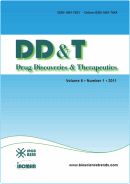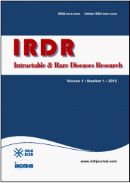Intractable Rare Dis Res. 2025;14(3):216-222. (DOI: 10.5582/irdr.2025.01043)
Clinical and genetic analysis of X-linked nephrogenic diabetes insipidus caused by a novel AVPR2 mutation (NM_000054.6:exon3:c.245G>A (p.Cys82Tyr)) in a Chinese boy
Yang JM, Sun Y, Chen C
X-linked nephrogenic diabetes insipidus (X-NDI) is a rare congenital disease caused by inactivating mutations of the vasopressin type-2 receptor (AVPR2), characterized by impaired renal concentrating ability, dramatic polyuria, polydipsia and risk of dehydration. This study aims to elucidate the pathogenic mechanisms associated with a novel variant in the AVPR2 gene, which has been implicated in X-NDI. Whole exome sequencing (WES) was employed to identify genetic variants, complemented by bioinformatic analyses to predict the functional impact of these mutations. A male patient, aged 11.5 years, presented with polydipsia, polyuria, rapid weight gain, and associated physical anomalies, alongside hormonal imbalances and elevated serum sodium and chloride levels. Notably, WES revealed a hemi variant in the AVPR2 gene (NM_000054.6:exon3:c.245G>A(p. Cys82Tyr)), classified as a variant of uncertain significance. The findings indicate that a combined pharmacological approach can effectively manage X-NDI symptoms without significant side effects, suggesting a favorable prognosis for the patient. After hydrochlorothiazide for one month, both serum sodium and chloride recovered a normal level. This study highlights the importance of early diagnosis and personalized treatment strategies in enhancing patient outcomes. Future research should focus on expanding genetic testing within the population to further elucidate the genetic underpinnings of X-NDI and explore the potential for targeted therapies, ultimately improving the management of this challenging condition. This newly identified mutation expands the spectrum of mutations in X-NDI.







